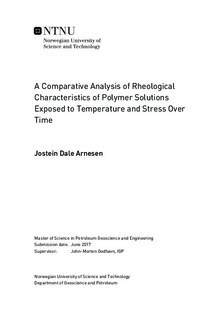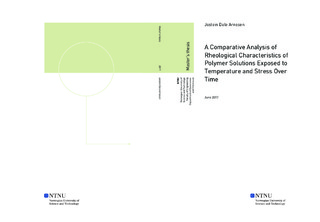| dc.description.abstract | A series of experiments with thixotropic fluids composed of polymers and salt, with various temperatures and in circulation was carried out to examine how it influenced the current polymers decompositioning. The results indicated that salt would increase the time a polymer, in relatively high concentrations, would maintain its initial rheological characteristics. Exposing a polymer solution to shear stress has revealed that the polymer undergoes viscoelastic creep where the polymer fails under stress and decreases in viscosity rapidly the first 24 hours, 2 cP in 2%PAC and 10 cP in 4%PAC, before flattening out. The rapid early decrease was enhanced when the temperature was increased from 25℃ to 50℃ in both a 2%PAC solution and a 4%PAC solution with respectively 4 cP and 17 cP (Plastic viscosity). The polymer xanthan gum appears to be more reactive to small changes in temperature and shear stress when dissolved in water than polyanionic cellulose. | |

